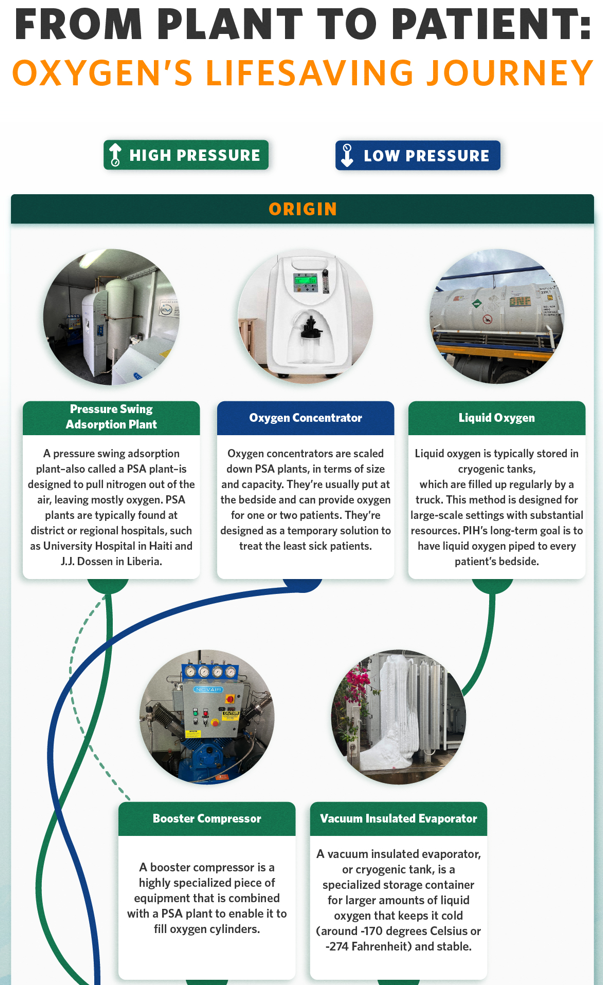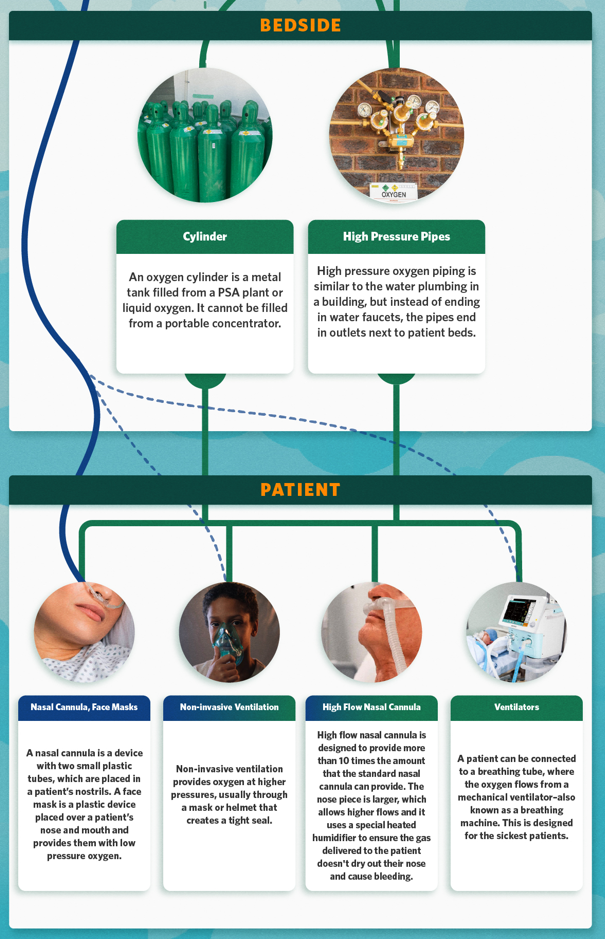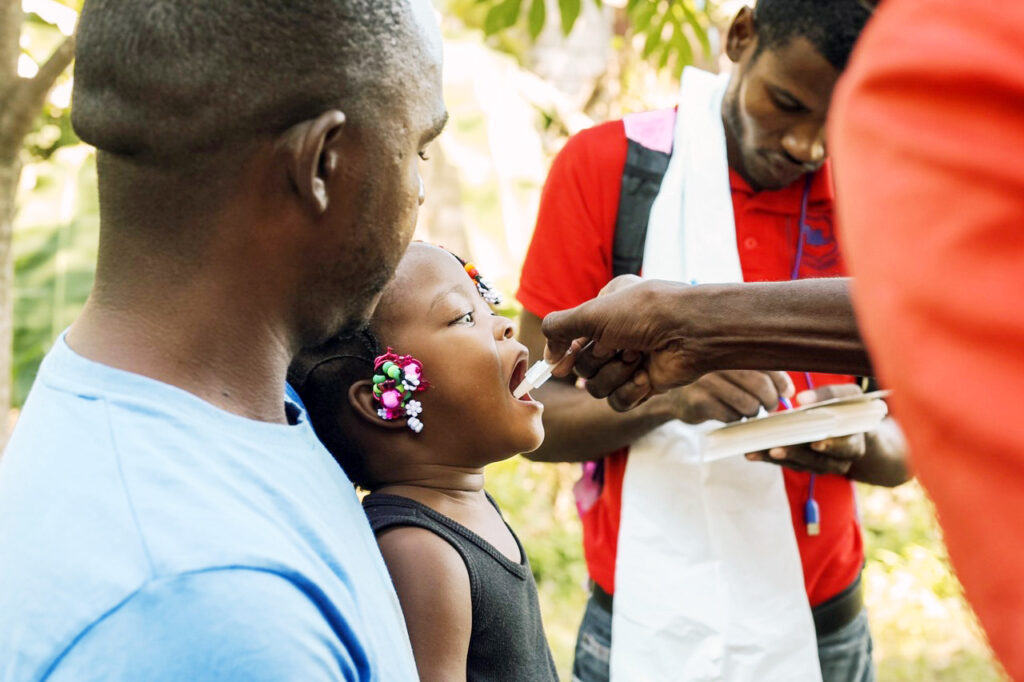Infographic: Oxygen’s Lifesaving Journey
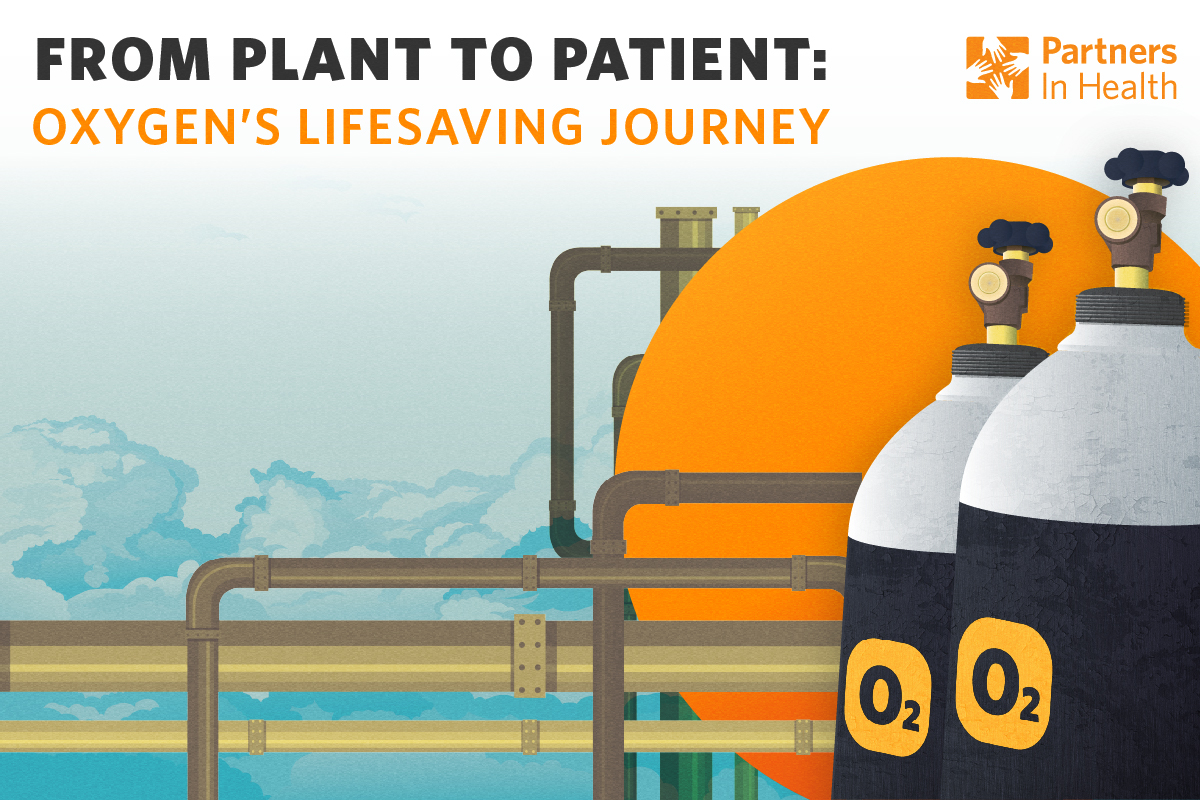
Follow oxygen’s path from production, through delivery, and to a patient’s bedside
Posted on Aug 24, 2022
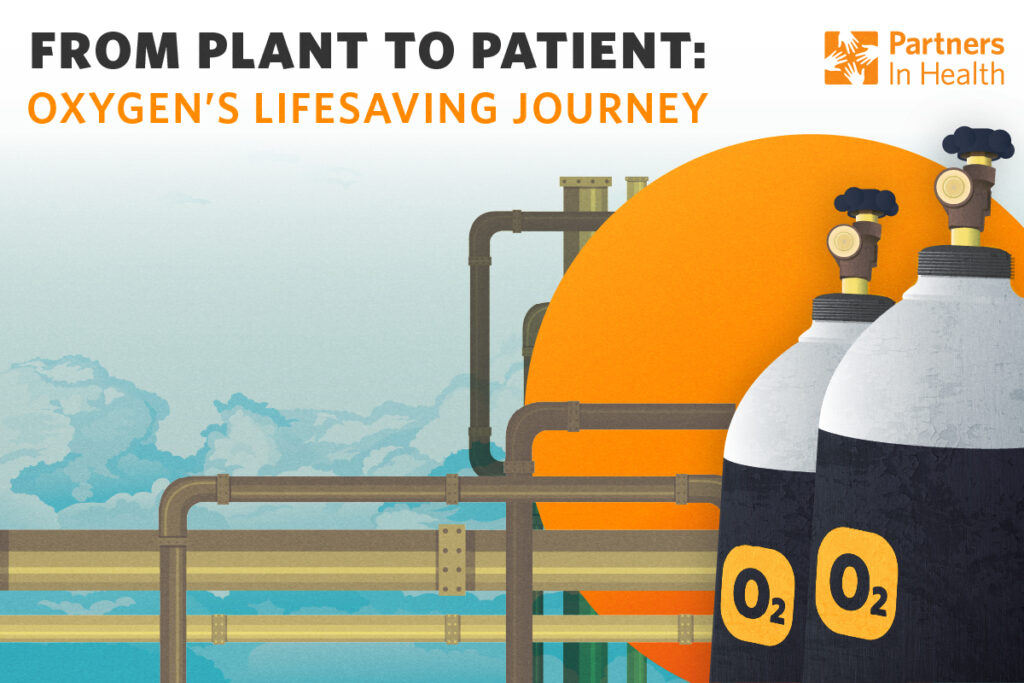
Oxygen is one of many critical building blocks of a functional and equitable health system—like running water and 24-hour power. Yet most medical facilities in low- and middle-income countries lack access to this crucial resource.
Effective treatment with medical oxygen requires the right amount at the right time, with close to zero margin for error—oxygen shortages lasting just 30 minutes can be catastrophic. Oxygen insecurity means that all it takes is a power outage, mechanical failure, or surge in patients for oxygen supplies to run out.
Although this sounds complex and challenging, there is a solution: investing in the “five S’s”—the staff, stuff, space, systems, and social support needed for strong health systems. These investments save lives. For example, building and strengthening oxygen services for children under 5-years-old with pneumonia reduces the odds of disease-specific mortality by an estimated 46%. But the impact of improving oxygen systems extends beyond any single disease. It is also associated with a 40% decrease in the odds of death for all children in the hospital.
The global oxygen crisis must be addressed. While the COVID-19 pandemic highlighted regional disparities in oxygen access, it has been a longstanding issue. Before the pandemic, 9 in 10 hospitals in low- and middle-income countries lacked access to oxygen therapy.
To accelerate efforts to overcome oxygen-related barriers and in partnership with funder Unitaid, Partners In Health (PIH) launched BRINGO2, a yearlong oxygen systems strengthening initiative in Peru, Malawi, Lesotho, Rwanda, and Madagascar. BRINGO2 is helping fight the global oxygen crisis by supporting the repair and maintenance of piping systems and cylinders, training technical and clinical staff, and planning long-term oxygen distribution networks, among other efforts. So far, significant improvements have been made across countries: a high-tech remote monitoring system was installed at the Botsabelo pressure swing adsorption (PSA) plant in Lesotho, biomedical technicians repaired 76 oxygen concentrators in Malawi and are actively repairing 20 PSA plants in Peru, and a new PSA plant is being installed at Butaro District Hospital in Rwanda.
The comprehensive initiative involves every aspect of oxygen’s complex journey. In the infographic below, learn how oxygen makes its way–from production to bedside–to those who need it most.
Originally published on pih.org
